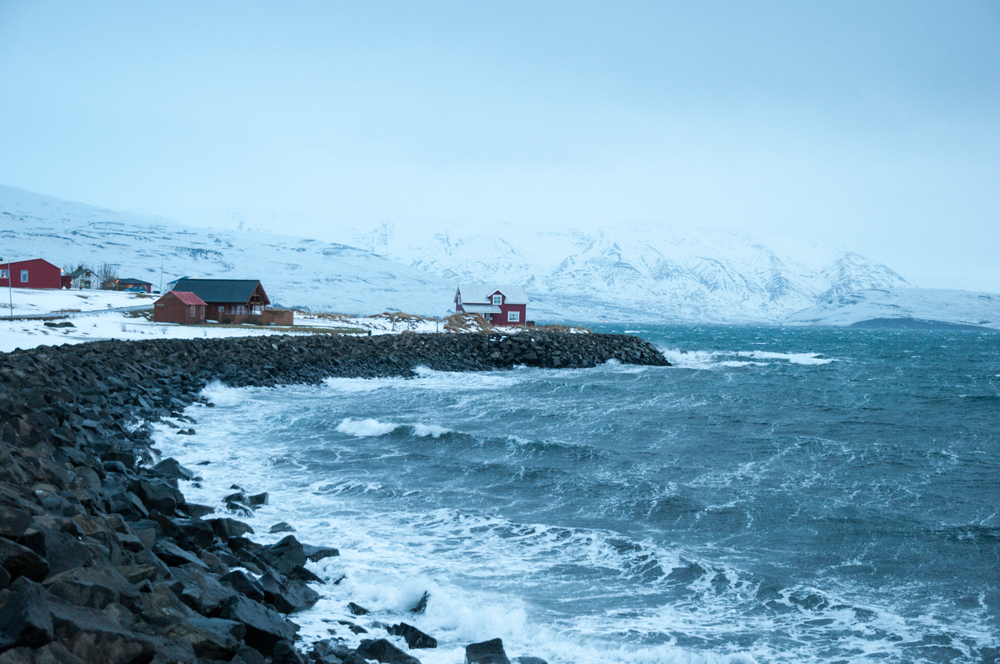I’ll just come right out and say it. Iceland can be very windy. I say “can” because windiness is a relative term depending on what you’re used to. The gusts you’ll find on this small, Nordic island are significantly stronger than your run-of-the-mill gentle breeze. Would it be an exaggeration to say that the wind in Iceland can knock you down? Definitely not. But thankfully it’s not that powerful all the time. Extreme weather conditions and potent storms will definitely cause wind conditions to pick up. So just how windy is it in Iceland? And how do you deal with the extreme weather that you encounter? Is it safe for tent camping? And what about the average wind speeds? We’ll get into these questions and more as we dive into Iceland’s climate, weather, and the wind.
Iceland: A Tiny Island with Lots of Wind
When most tourists travel to Iceland, they expect it to be really cold. The country’s name has the word “ice” in it after all. But what catches many first-time visitors off guard is the wind. Most just aren’t expecting it. Everyone knows the weather here is a bit crazy. And in addition to experiencing rain, snow, sleet, and sunshine all in the same day, you might also have to deal with some pretty high winds.
How Windy is Iceland?
While windiness can vary from place to place and season to season, let’s take a look at Reykjavik to see some wind forecasts. On a day with little to no wind, gusts will be around 10-15 mph (16-24 km/h). When the winds are blowing really strongly, they’ve been known to reach 32 mph (52 km/h) on some days. If you think that’s rough, you haven’t seen anything yet. While most people associate hurricanes with more tropical climes, I can assure you that Iceland has its fair share of gale force winds. Back in 2015, Iceland experienced a terrible winter storm near Vík with winds up to 160 mph (258 km/h). That’s equivalent to a Category 5 hurricane on the Saffir–Simpson scale. While it is rare to have winds this strong, you should never underestimate weather conditions in Iceland, especially during a storm.
Practicing Safety When Driving in Iceland’s Wind
When Icelanders tell you that it’s going to be really windy, believe them. They’ve grown up in this climate, and they’re very familiar with the weather. They also know the dangers of driving In high winds, and if they tell you to stay off the road, it’s definitely for your own good. Tourists who have chosen not to heed their warnings have ended up blown off the road. It’s better to be safe than sorry, so always use the tools at your disposal when driving in Iceland’s wind. Check the wind speed forecast before you embark upon your journey. There are also electric boards on the road the display temperature and wind speed. Pay attention to these and use good sense. If for some reason you find yourself caught in a windstorm, have the good sense to pull over and wait until it passes. This is especially true for smaller vehicles that can be easily blown around by powerful winds.
Two of my favorite resources for tracking the weather in Iceland are the Icelandic Meteorological Office and the Road and Coastal Administration. They both issue advisories and severe weather warnings. Windfinder.com is also a useful tool.
Is Camping in Iceland a Good Idea Given How Windy it is?
We’ve had some of our blog readers ask if it’s possible to go tent camping in Iceland in spite of the wind. It is, that comes with a few caveats. I recommend coming in the summer because the weather is less harsh. I also recommend having a backup plan like sleeping in your car or campervan. Lastly, be sure to arrive at the campsite with plenty of daylight to set up your tent. If the wind gets really strong, you want to have tents that are well secured by having tent stakes driven deep into the ground. I also always tell people to pitch their tent against some sort of vertical surface. A tree, a hill, or even a large bush or hedge can act as a natural wind barrier.
How Windy is Iceland?
If you come to Iceland for vacation, you need to be prepared to face the wind. While not every day is like battling a hurricane, even during the mildest days there are still some strong breezes blowing. Bring a high-quality windbreaker and maybe even a balaclava to protect your face from being lashed by high winds. And don’t say I didn’t warn you.
Iceland24
© All rights reserved




